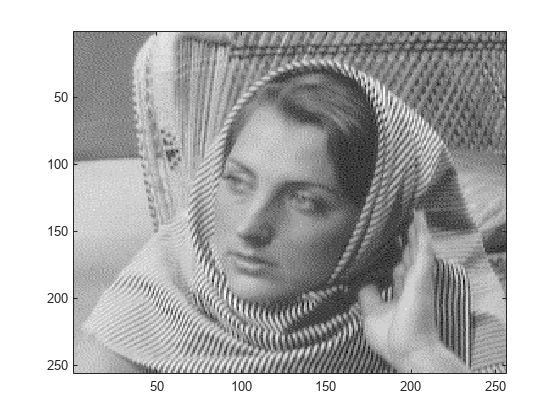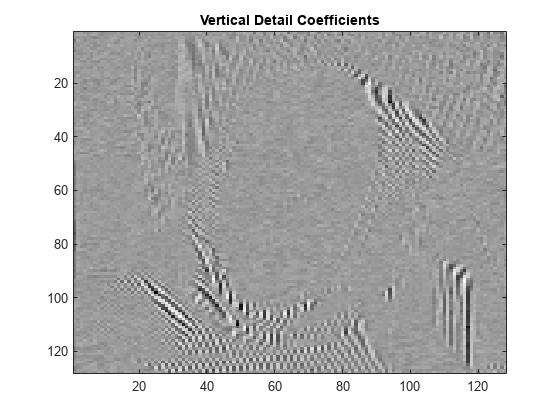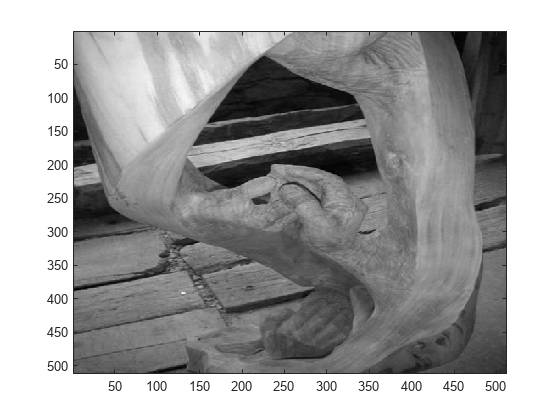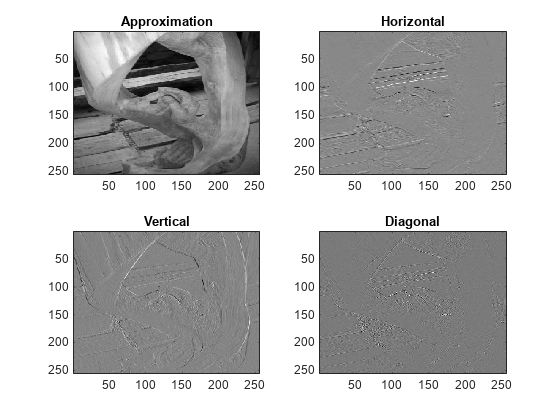dwt2
Single-level 2-D discrete wavelet transform
Syntax
Description
[
computes the single-level 2-D DWT with the extension mode
cA,cH,cV,cD] = dwt2(___,"mode",extmode)extmode. Include this argument after all other
arguments.
Note
For gpuArray inputs, the supported modes are
"symh" ("sym") and
"per". All "mode" options except
"per" are converted to "symh". See
the example Single-Level 2-D Discrete Wavelet Transform on a GPU.
Examples
Input Arguments
Output Arguments
Algorithms
The 2-D wavelet decomposition algorithm for images is similar to the one-dimensional case. The two-dimensional wavelet and scaling functions are obtained by taking the tensor products of the one-dimensional wavelet and scaling functions. This kind of two-dimensional DWT leads to a decomposition of approximation coefficients at level j in four components: the approximation at level j + 1, and the details in three orientations (horizontal, vertical, and diagonal). The following chart describes the basic decomposition steps for images.

where
 — Downsample columns: keep the even-indexed columns
— Downsample columns: keep the even-indexed columns — Downsample rows: keep the even-indexed rows
— Downsample rows: keep the even-indexed rows — Convolve with filter X the rows of
the entry
— Convolve with filter X the rows of
the entry — Convolve with filter X the columns
of the entry
— Convolve with filter X the columns
of the entry
The decomposition is initialized by setting the approximation coefficients equal to the image s: cA0 = s.
Note
To deal with signal-end effects introduced by a convolution-based algorithm, the
1-D and 2-D DWT use a global variable managed by dwtmode. This variable defines
the kind of signal extension mode used. The possible options include zero-padding
and symmetric extension, which is the default mode.
References
[1] Daubechies, Ingrid. Ten Lectures on Wavelets. CBMS-NSF Regional Conference Series in Applied Mathematics 61. Philadelphia, Pa: Society for Industrial and Applied Mathematics, 1992.
[2] Mallat, S.G. “A Theory for Multiresolution Signal Decomposition: The Wavelet Representation.” IEEE Transactions on Pattern Analysis and Machine Intelligence 11, no. 7 (July 1989): 674–93. https://doi.org/10.1109/34.192463.
[3] Meyer, Y. Wavelets and Operators. Translated by D. H. Salinger. Cambridge, UK: Cambridge University Press, 1995.
Extended Capabilities
Version History
Introduced before R2006a




